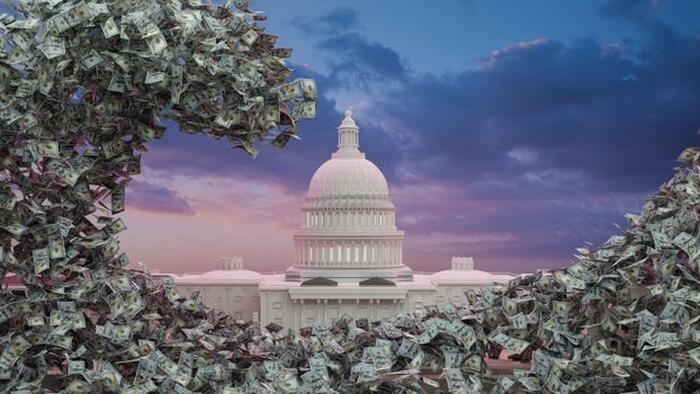In recent months, the yield on the United States 10-year government bond has fluctuated between a low of 3.6% and a troubling spike to 4.2%. This rapid increase has erased any potential benefits from earlier rate cuts. The primary reason for this volatility is an alarming surge in public spending, alongside a growing skepticism among bond investors regarding the government’s capacity to manage its finances effectively. The prevailing sentiment is that such fiscal irresponsibility may unleash a resurgence of inflation, feeding investors’ fears. Consequently, there is a clear trend of rising demand for higher yields on U.S. Treasury securities as confidence wanes.
The government’s strategy appears focused on boosting Gross Domestic Product (GDP) figures through excessive borrowing and public sector hiring, which may ultimately lead to dire economic consequences, including stagnation or stagflation. In just three months, U.S. debt has surged by over $850 billion, driven by an acceleration of borrowing that constitutes almost half of that figure occurring in the past three weeks alone. While the forthcoming GDP reports may present a strong statistical performance, they mask the underlying labor market’s vulnerability, which is being propped up by temporary government job increases. This trend sets the stage for an approaching fiscal calamity.
The fiscal outlook remains bleak, with the Congressional Budget Office (CBO) forecasting a staggering $2 trillion deficit and a potential accumulation of $16 trillion in new debt over the next decade. Such scenarios predict consistent inflation driven by unrestrained public spending and monetary expansion. Investors seem increasingly skeptical of the Federal Reserve’s ability to manage these dynamics responsibly, demanding higher yields as a premium for the perceived risk. In the political landscape, potential leadership changes—such as a victory for Kamala Harris—may exacerbate this situation, with her proposed policies estimated by the CBO to add $2.25 trillion in debt.
In contrast, Trump’s approach suggests tax cuts and an attempt to balance the budget through increased tariffs on imports. However, this strategy raises doubts about its effectiveness, especially in light of mandatory spending, which constitutes around 64% of the federal budget, projected to increase by an additional trillion dollars over the next four years. Realistically, while tax cuts could spur economic growth, they cannot sufficiently offset the skyrocketing mandatory expenses. The U.S. requires a bold strategy to rein in discretionary spending while stimulating growth through tax reforms that promote investment rather than inflation.
The underlying principle of tax cuts is that they are not inherently inflationary; the money remains within the economy but shifts to those who earn it. In contrast, rising government expenditure tends to be inflationary as it often involves increasing the money supply without corresponding demand. The current administration’s reliance on expansive fiscal measures may have already breached acceptable economic and monetary thresholds. The official narrative attempts to mask this reality, suggesting that the economy is on stable footing, even as real wages and savings are effectively eroded.
As the bond market signal apprehension over future inflation, preliminary indicators suggest that inflation may be set to rise again imminently. Bloomberg Economics anticipates increases in both core and headline Personal Consumption Expenditures (PCE) price indexes, potentially elevating annual core inflation to 2.7%. Such a trajectory confirms that the fiscal irresponsibility displayed by the U.S. government is not merely a function of broader economic trends but a result of deliberate policy choices rooted in inflationist ideology. This approach serves to facilitate an economic façade, presenting the administration as a savior amid the very inflationary pressures its policies have inadvertently exacerbated, thus exacerbating wealth disparities among the American public.

